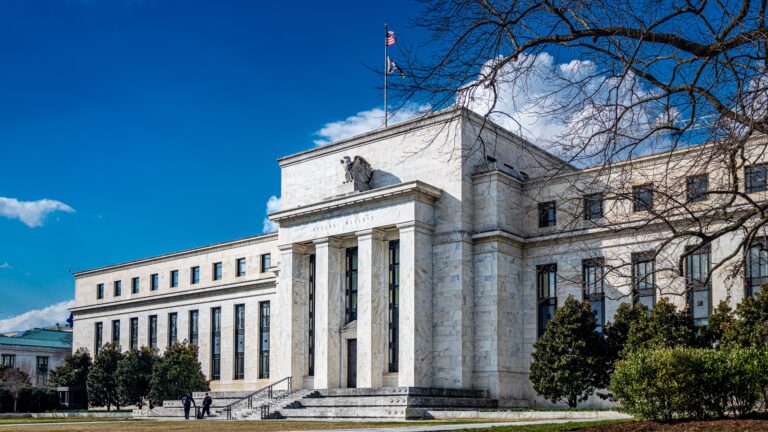

Fed Balance Sheet Normalization
Abstract
Key takeaways: While details are lacking, one can generally expect balance sheet normalization to start at the end of 2017, with reinvestment gradually phased out over one year, taking 2.5 years to complete for a total reduction of $1.8 trillion in Treasury and MBS bonds.
Impacts to Expect:
- Higher interest rates on Treasury securities
- Higher short-term rates
- Higher demand for Treasury bills
- Lower Fed RRP capacity
- A steeper yield curve
Implications for Cash Investors:
- Quasi policy rate hikes
- Yield pressure at Treasury auctions
- Impact on government MMFs
- Higher potential for repo failures
- Wider credit spreads and higher market volatility
Introduction
As the Federal Reserve continues with its monetary policy normalization, Fed watchers are keenly interested in when and how the Fed will start reducing its balance sheet. While Treasury and mortgage backed securities (MBS) investors will certainly feel the market impact from such actions, the subject is equally relevant to institutional cash investors as reducing the Fed balance sheet has a similar effect on short-term interest rates as hiking the fed funds rate.
In this strategy commentary, we will approach the subject from the vantage point of the cash investor and seek to explain the mechanics of the normalization process. While estimates vary, we will also discuss the interplay between balance sheet reductions and fed funds rate increases, and how the changing dynamics of Treasury reinvestments affect other short-term instruments.
Why Do We Care?
The Federal Reserve embarked on successive rounds of large asset purchases of Treasury and MBS securities in the wake of the financial crisis. Starting with a balance of $925 billion in September 2008, just prior to the Lehman Brothers bankruptcy, the Fed accumulated assets to a peak level of $4,516 billion in January 2015. It kept a reinvestment policy to keep the balance relatively stable, which stands at $4,460 billion as of May 31, 2017.
Quantitative Easing in Reverse: Balance sheet normalization has market implications for cash investors, as it represents de facto tightening of the monetary policy similar to hiking the fed funds rate. It essentially reverses the effect of lower interest rates from bond purchases known as quantitative easing. Estimates vary, but experts agree that balance sheet reduction will lead to generally higher rates.
Risk of the “Taper Tantrum”: Balance sheet reduction, if not communicated well or executed cautiously, could cause significant adverse market reactions that impact trading liquidity and bond issuance. Back in June 2013, when the Fed was still in the middle of monthly asset purchases, then Fed Chairman Ben Bernanke told the press that the Fed would likely start slowing – that is, tapering – the pace of the purchases later in that year. Market reactions to his announcement were violent, with the yield on the 10-year US Treasury spiking from 2.18% to 2.55% between June 19 and June 21. The value of the dollar also jumped more than 2% against other major currencies in the same period. Today, Fed officials and market observers are keenly interested in avoiding a repeat of the now famed taper tantrum.
Treasury Issuance and HQLA Supply: The Fed keeps the size of its balance sheet constant today by reinvesting proceeds from matured bonds into new ones. The Fed buys new Treasury bonds from the Treasury Department passively when the department conducts auctions, thus not putting price pressure on public bidders. When the Fed reduces or stops its purchases, the Treasury will need to sell more of its bonds to the public, likely at higher yields and lower prices. Shrinking the Fed’s bond portfolio also results in correspondingly lower reserve balances. Recent regulations require banks to keep a portion of their assets in high quality liquid assets (HQLAs), which include reserve balances. A smaller Fed balance sheet, thus, will force banks to buy up other HQLAs such as Treasury bills to replace shrinking reserves, an action that may cause a shortage of short-term government securities and lower yields.
Impact on the Yield Curve and other Asset Classes: The subject may be of interest to cash investors as the yield impact on securities along the maturity spectrum may be different, creating risk concerns and total return opportunity. Even though the Fed buys only Treasury and MBS bonds, its actions also influence the behaviors of other market participants and the supply and price/yield characteristics of repurchase agreements (repos), commercial paper (CP) and deposits, to name a few.
DOWNLOAD FULL REPORT
Our research is for personal, non-commercial use only. You may not copy, distribute or modify content contained on this Website without prior written authorization from Capital Advisors Group. By viewing this Website and/or downloading its content, you agree to the Terms of Use.
Please click here for disclosure information: Our research is for personal, non-commercial use only. You may not copy, distribute or modify content contained on this Website without prior written authorization from Capital Advisors Group. By viewing this Website and/or downloading its content, you agree to the Terms of Use & Privacy Policy.


